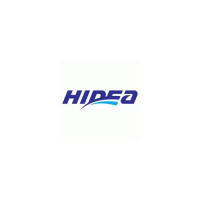If another vessel is around the bend, it too
should sound the whistle. Even if no reply is
heard, however, the vessel should still pro-
ceed around the bend with caution. If you
navigate such waters with your boat, you will
need to carry a portable air horn, available
from local marine supply stores.
Fishing vessel right-of-way
All vessels that are fishing with nets, lines or
trawls are considered to be “fishing vessels”
under the International Rules. Vessels with
trolling lines are not considered fishing ves-
sels. Fishing vessels have the right-of-way
regardless of position. Fishing vessels can-
not, however, impede the passage of other
vessels in narrow channels.
Sailing vessel right-of-way
Sailing vessels should normally be given the
right-of-way. The exceptions to this are:
1. When the sailing vessel is overtaking the
power-driven vessel, the power-driven
vessel has the right-of-way.
2. Sailing vessels should keep clear of any
fishing vessel.
3. In a narrow channel, a sailing vessel
should not hamper the safe passage of a
power-driven vessel that can navigate only
in such a channel.
Reading buoys and other markers
The waters of the United States are marked
for safe navigation by the lateral system of
buoyage. Simply put, buoys and markers
have an arrangement of shapes, colors,
numbers and lights to show which side of the
buoy a boater should pass on when navigat-
ing in a particular direction. The markings on
these buoys are oriented from the perspec-
tive of being entered from seaward (the boat-
er is going towards the port). This means that
red buoys are passed on the starboard (right)
side when proceeding from open water into
port, and black buoys are to port (left) side.
When navigating out of port, your position
with respect to the buoys should be re-
versed; red buoys should be to port and
black buoys to starboard.
Many bodies of water used by boaters are
entirely within the boundaries of a particular
state. The Uniform State Waterway Marking
System has been devised for these waters.
This system uses buoys and signs with dis-
tinctive shapes and colors to show regulatory
or advisory information. These markers are
white with black letters and orange boarders.
They signify speed zones, restricted areas,
danger areas, and general information.
Remember markings may vary by geo-
graphic location. Always consult local boat-
ing authorities before driving your boat in
unfamiliar waters.

